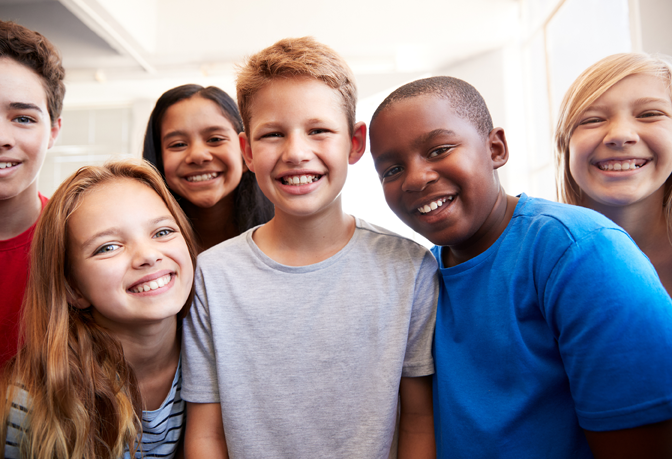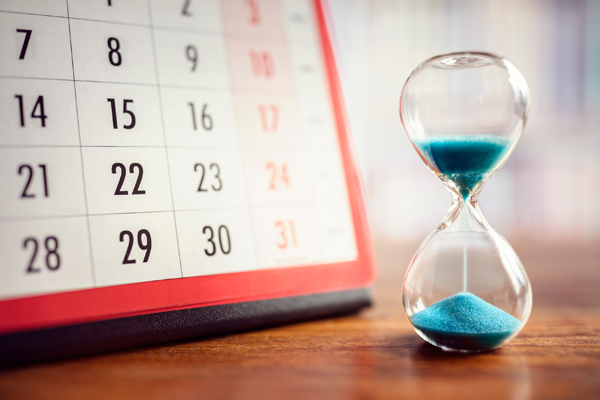A school’s regular newsletter can be a centerpiece of a communication strategy that helps to create a vibrant and engaged school community. Families can find out about upcoming events. Administration highlights process and volunteer opportunities. Staff members see their hard work recognized.
The goal of the newsletter is to collect a variety of great and relevant content and then use it to create a readership experience that connects stakeholders to your school community. Sadly, many schools and districts do not capitalize on the opportunity newsletters offer. Even the resurgence of newsletters in email marketing from the private sector hasn’t seemed to help educators recognize the value of the format. Rather than being used as a focal point of longer-form connection, school newsletters are often an afterthought, consisting of random pictures and clip art laid out poorly and distributed inconsistently.
Would you like to improve your school’s newsletter? Are you intrigued by the idea of making it a pillar of your overall communication plan? I can help. I spent seven years in school communications after working my way through eight years in community journalism. Really, a newspaper is just a big newsletter for a community, so I can give you some great value as you think through this option. Here are my six tips for making an awesome newsletter for your school community.
- Go Digital. Push Print.
- Make it the Centerpiece of Your Communications Plan
- Pictures are King
- Totally Skewed
- Calendar is Key
- Never Ever Miss Deadline

Go Digital. Push Print.
Many school administrators wrestle with the question of whether to distribute their newsletters through email/online or to print a hard copy version that goes home in backpacks. Honestly, the most correct solution is tailored to you and your stakeholders. What will be best received by your audience? What works in a plan that you will consistently implement?
Those issues being equal, my suggestion would be to go digital. You simply can’t beat putting a nice-looking piece directly into your families’ inboxes. Links are right there to be clicked on, images look great, it gets them back to your school website efficiently—it’s just a good approach. Sending home a print newsletter might help families who aren’t as tech-invested. But it also means everyone will have no choice but to get the backpack-abused version of your newsletter, all crushed and crumpled. This is not the look you want, and this approach doesn’t necessarily get that information to those particular families either. Plus, you just burned through a ton of ink and paper!
The compromise? Design and distribute in digital. Then print a few copies for your front office counter and give them a nice display. They should not be just another flyer up there. Consider going above and beyond and letting families know they can request the newsletter be sent home. Maintain that list, and then make sure those kids get a printed version each time. It’s easier, cheaper, and way more effective than sending one home with every kid in the school!
Make It the Centerpiece of Your Communications Plan
We want to create a great and consistent experience for your families. But, your newsletter is very much like your school website; it’s the place your stakeholders can go to find information. Try to think of your newsletter like a snapshot version of the most timely elements of your website—and your social media storytelling. There should be a great deal of overlap between all of these.
For example, let’s say you have a Family Math Night event coming up next week, and your school sends out a newsletter every Friday. This Friday’s newsletter should include all the need-to-know info about the event—who, when, what to bring, etc. Of course, you should already have a page on your website about the event, so you would want to pull out some highlights to put in the newsletter and then link to the webpage. That link will no doubt be on social media as well.
Immediately after the event, you should be telling the story on social media. Ideally, a gallery of images on your website would also be great. For next week’s newsletter, the event should be featured prominently—along with pictures and a link to the gallery. You can also pull comments from your social media page to highlight the fun people had in their own voices.
But this strategy isn’t just for events. There should always be a great deal of content overlap—use and reuse between the newsletter and your other channels of communication. The newsletter can bring together different channels into one packaged space to create the readership experience. That regular and defined communication piece (with some nice production value) is an infinitely better way to build authentic engagement than one-off tweets when you have the time and inclination.
Pictures are King

You know that a picture tells a thousand words. So why would you ever put out a newsletter with no images from your school?
Stakeholders want to see your spaces, your cool instructional activities, your team members, and especially their kids in your newsletter. That’s what community is. Community is not horrible clip art. Ever. If you use those horrible clip art pieces, I will find you and I will be big mad at you.
Stock photos can have a place in your newsletter effort. But steer clear of face shots, and only use detail shots to add visual appeal.
One final note—do not blame your lack of pictures on “Do Not Publish” restrictions. Are there students whose images you cannot publish? Yes. Guess who keeps the records of those students? You do. Figure out who’s fair game and who isn’t, get some pictures together, and get them in your next newsletter.
Totally Skewed

You need pictures—not distorted images. Skewing a picture is incredibly painful to see, and it reflects very poorly on your presentation skills—the same ones you evaluate your students on. Don’t know what I’m talking about? Ok, here’s some Design 101 for you: When you add a picture, sometimes you need to change its size. There is a way to do this that keeps the picture proportional. What you cannot do is drag the corners around willy nilly until you make it fit by making faces long and distorted. Have you done it before? That’s ok! Now you know that skewing pictures is not ok. To learn how to avoid it, find some helpful tutorials in your design program or do a basic Google search.
Calendar is Key

Arguably the most critical part of the newsletter is the calendar. If you were only going to put one thing in the newsletter, the calendar would be it. Your principal’s message is nowhere near as important, just in case you were wondering. Dates for events must be accurate. Anything that includes a change to the typical schedule, showing up in the evenings, bringing something to school, dressing some particular way, etc. must be on there. Do not leave out anything major. Cross-check all of your school’s various calendars to make sure you haven’t missed anything. To help prevent any issues, be sure to also add a link to your school’s website Calendar page. Add a message like, “For the most up-to-date calendar and event listings, you can always visit the calendar on our school website at…”
We need to get this right because this calendar is a critical piece of a family’s planning for the next week or month. They can take a few concentrated moments with your calendar and the family calendar to sync up activities and schedules. It’s a primary use of your newsletter, and, in many ways, it’s the core of the experience. This gets everyone aligned. It starts with the calendar and carries over into engagement.
Never Ever Miss a Deadline
Your newsletter will probably never truly be done—at least not the way you envisioned it. You will have elements you planned on having that didn’t come to fruition, pictures that didn’t fit, and write-ups that never came.
Publish it anyway.
When you get to the deadline, do your best to make things as comprehensive as possible (starting with the calendar!), and then ship.
Why send out less than your best? You need to respect your families and their need to have reliable and consistent messaging. It’s actually worse to miss the deadline than it is to put out a product that’s a bit rough around the edges (total train wrecks not included). That said, if you do distribute one edition of a lower-quality newsletter, you need to review your process after the fact and ensure that you have those issues resolved for the next publication date.
Conclusion
It’s a simple thing, but a newsletter is a powerful communication piece. It funnels a wide range of content into one space, adds some production value, and is distributed consistently to create a reader experience that aligns your community with your mission. Much of the content should already be created, but it does take some extra time to put together. Consider that effort an investment in family engagement and elevating your school’s reputation.








